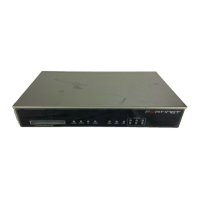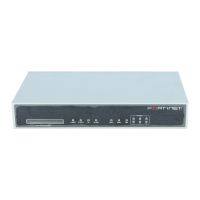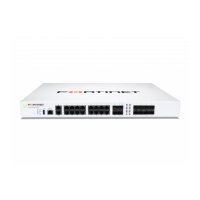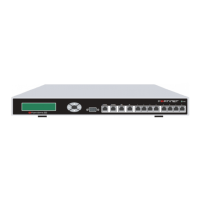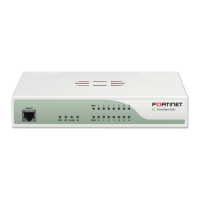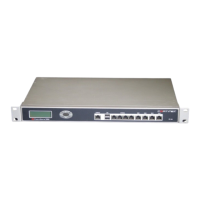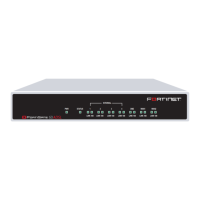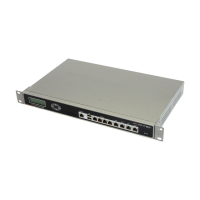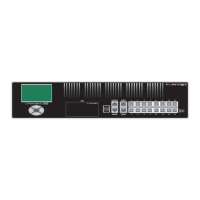Router RIP
FortiGate-800 Administration Guide 01-28006-0008-20041105 151
RIP
The FortiGate implementation of the Routing Information Protocol (RIP) supports both
RIP version 1 as defined by RFC 1058, and RIP version 2 as defined by RFC 2453.
RIP version 2 enables RIP messages to carry more information, and to support simple
authentication and subnet masks.
RIP is a distance-vector routing protocol intended for small, relatively homogeneous,
networks. RIP uses hop count as its routing metric. Each network is usually counted
as one hop. The network diameter is limited to 15 hops.
General
Figure 57: RIP General settings
RIP Version Enable sending and receiving RIP version 1 packets, RIP version 2
packets, or both for all RIP-enabled interfaces. You can override this
setting on a per interface basis. See “Interface options” on page 154.
Default Metric For non-default routes in the static routing table and directly connected
networks the default metric is the metric that the FortiGate unit advertises
to adjacent routers. This metric is added to the metrics of learned routes.
The default metric can be a number from 1 to 16.
Enable Default-
information-
originate
Advertise a default static route into RIP.
RIP Timers: RIP timer defaults are effective in most configurations. All routers and
access servers in the network should have the same RIP timer settings.
Update The time interval in seconds between RIP updates.
Garbage The time in seconds that must elapse after the timeout interval for a route
expires, before RIP deletes the route. If RIP receives an update for the
route after the timeout timer expires but before the garbage timer expires
then the entry is switched back to reachable.
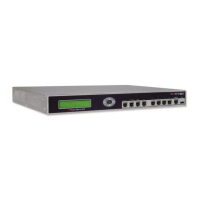
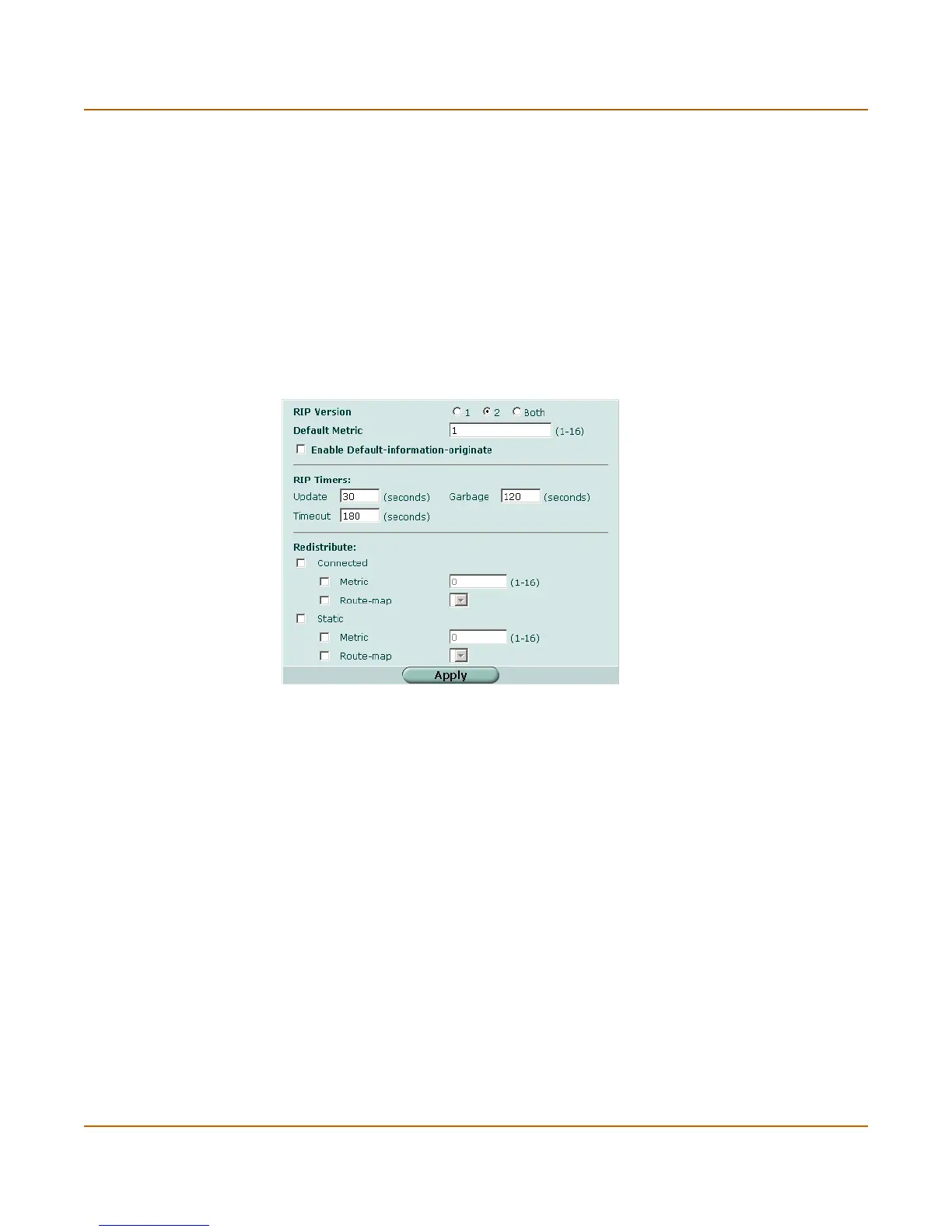